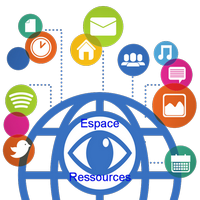Ever since Millennium Development Goal 8 focused attention on the role of partnerships between states and the private sector in making available the benefits of ICTs, the idea that ICT partnerships can make a significant difference to development through educational delivery and attainment has been gaining momentum. However, very many such initiatives across the world have failed to deliver their potential. This short note therefore highlights the key success factors necessary for implementing such partnerships.
What do we mean by partnerships?
All too often the word ‘partnership’ is used to refer to any project or programme in which several different organisations are involved. However, there is now a well-established literature on what makes partnerships successful[2], and one of the key conclusions to be drawn from this is that they need to be planned very carefully from the outset. Sadly, too many initiatives seek to reinvent the wheel, and do not build on the experiences of previous good practices.
It is important to differentiate between three different kinds of ICT for education partnerships. In the early days of such partnerships, largely building on the experiences of various private finance initiatives, they were very much based on interactions between the public and private sectors alone, thus giving rise to the term Public Private Partnerships (PPPs). However, it was soon recognised that many of these failed because insufficient attention was paid to the crucial role of civil society organisations. This gave rise to the term Multi-stakeholder partnerships (MSPs), which reflected the importance of including a diversity of partners from all parts of society, and not just companies and states, if they are to flourish. A real challenge, though, is that delivering such partnerships is expensive, and there is as yet little definitive evidence that they do indeed provide better solutions than purely contractual relationships. Hence, the World Bank continues to use the term PPPs in a third way, which focuses especially on contractual relationships.[3]
What makes successful ICT for education Multi-Stakeholder Partnerships?
A recent systematic review undertaken for the UK’s Department for International Development[4] highlights five fundamental conclusions about what helps to make ICT4D partnerships in general successful:
- Involving the local community, and paying particular attention to the local context within which any such partnership is implemented;
- Focusing on clear and agreed intended development outcomes, even where the partners themselves may have different reasons for being involved in the partnership;
- Building issues of scale and sustainability into the partnership from the very beginning;
- “Successful partnerships are built on trust, honesty, openness, mutual understanding and respect”; and
- There needs to be a supportive ICT policy and infrastructure in place.
The third of these is particularly crucial in ICT for education partnerships. All too often, private sector partners are willing to be involved in a pilot proof of concept project, in the belief that the government or donors will then help this to go to scale. Such thinking is fundamentally flawed[5]. It is crucial that any such projects are designed from the very beginning to be delivered at scale. If a country cannot afford to give every child a laptop, for example, then does it really make sense to enter partnerships designed to deliver such a solution? Might it not be better first to give every teacher a laptop so that they can improve their teaching skills so that the quality of learning in their schools can improve?
Focusing specifically on educational partnerships, UNESCO and the World Economic Forum’s Partnerships for Education Initiative, highlights six general principles that should be at the heart of any such initiative:
- The need to begin with a clear definition of needs;
- The importance of all stakeholders owning the initiative;
- A conscious focus on impact;
- The existence of strong regulation and accountability;
- An emphasis on sustainability; and
- Effective monitoring and evaluation that feeds back into the revision and development of the initiative
This initiative also provides an excellent set of information and evidence from case studies of educational partnerships on its platform at www.pfore.org.
One of the most comprehensive reports on ICT for education partnerships is the forthcoming review of the experiences of the World Economic Forum’s Global Education Initiative (GEI) in implementing multi-stakeholder education partnerships,[6] many of which incorporated a significant use of ICTs, such as the Jordan Education Initiative[7] and the Egypt Education Initiative.[8] This adds further insights over and above the generally accepted principles outlined above:
- Successful initiatives have high-level leadership. This means that Ministers and CEOs need to ensure buy-in amongst their staff to delivering such ICT for education programmes.
- They need to be brokered by trusted and neutral organisations. The World Economic Forum played this role for the GEI, but there are few other such internationally respected bodies currently offering their services in this way.
- It is essential for ICT for education initiatives to begin with the educational outcomes foremost in mind. Such initiatives should not merely be about introducing computers or mobile phones into schools, but should rather address how specific educational needs can best be delivered.
- Given the throughout most of the world education remain primarily the responsibility of the public sector, it is crucial that ministries of education are at the centre of any such initiatives. They should not therefore be driven primarily by an ICT ministry or the private sector.
- It is crucial to ensure that the required resources are agreed upon right at the beginning of the initiative. All too often in the past, such partnerships have experienced ‘budget creep’ that has undermined their viability and the willingness of partners to contribute additional resources.
- There need to be effective internal and external communication strategies in place, the former to ensure that all partners are continuously engaged, and the latter to share good practices among external stakeholders.
- Finally, it is important that there is a well understood strategic plan in place right from the beginning, and that this is adhered to. Whilst some revision in the light of monitoring and evaluation processes is desirable, it is important that the key partners are not distracted by ‘the next big idea’. Effecting fundamental educational change is a lengthy business, and all partners must understand that they are in it for the long term.
Conclusions
As will be clear from the above, there is no simple recipe that can ensure every ICT for education partnership will be successful. However, there are some underlying principles that can certainly increase the probability of success. Not every situation will require the use of a partnership to deliver the intended educational outcomes, and one of the most important initial challenges is to think carefully about the main reasons why partnerships are being advocated. However, there is indeed much to be gained by all partners involved in multi-stakeholder ICT for education partnerships, and by ensuring that there is a clear and transparently recognised balance between what partners put in and what they expect in return, then they can indeed introduce effective changes that will improve both the quantity and quality of beneficial learning experiences.
By Tim Unwin[1] Chief Executive Officer, Commonwealth Telecommunications Organisation
[1] Chief Executive Officer, Commonwealth Telecommunications Organisation (
[2] See for example, Tennyson, R. (2003) The Partnering Toolbook, London: IBLF and GAIN; Unwin, T. (2005) Partnerships in Development Practice: Evidence from Multi-stakeholder ICT4D Partnership Practice in Africa, Paris: UNESCO; Cassidy, T. (2007) The Global Education Initiative (GEI) Model of Effective Partnership Initiatives for Education, Geneva: World Economic Forum.
[3] Patrinos, H. et al. (2009) The Role and Impact of Public-Private Partnerships in Education, Washington DC: The World Bank; see also LaRocque, N. (2008) Public-Private Partnerships in Basic Education: am International Review, London: CfBT Education Trust.
[4] Geldof et al. (2011) What are the key lessons of ICT4D partnerships for poverty reduction? London: DFID systematic report, p.64 (www.dfid.gov.uk/R4D/PDF/Outputs/SystematicReviews/DFID_ICT_SR_Final_Report_r5.pdf);
[5] See for example www.eafricacommission.org/projects/127/nepad-e-schools-initiative
[6] Unwin, T. and Wong, A. (2012) Reflections and Retrospective on Multistakeholder Partnerships for Education Development 2003-2011, Geneva: World Economic Forum.







































